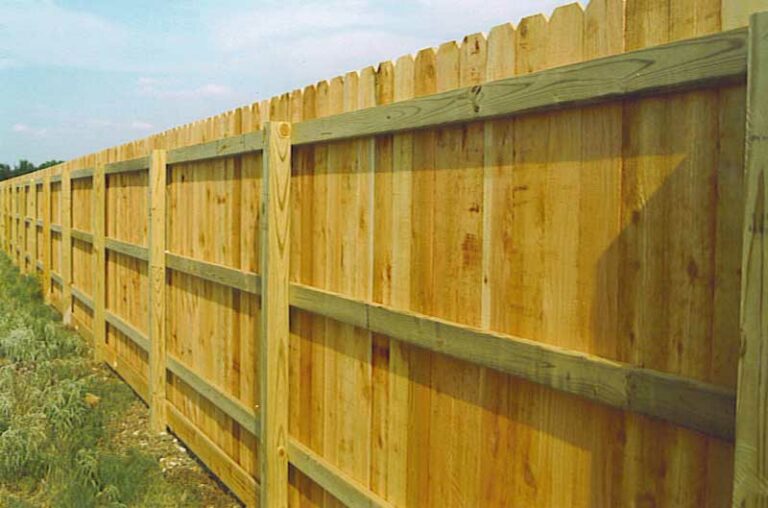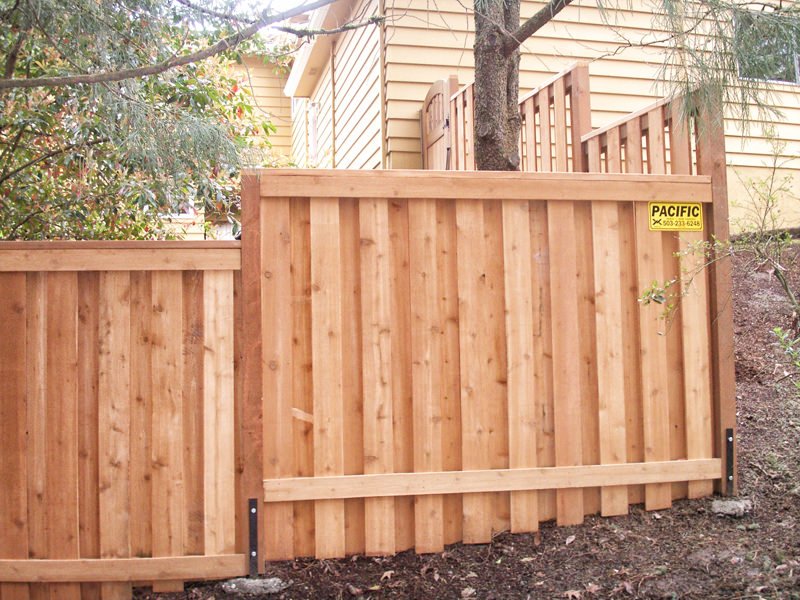Exactly How to Prepare for an Effective Wood Fencing Installation in Your Yard
When thinking about a wood fencing setup in your backyard, careful planning is paramount to ensure both functionality and visual appeal. Secret aspects such as spending plan allowance, material selection, and adherence to local laws need to be thoughtfully attended to. The style and layout of your fence can dramatically affect personal privacy and curb allure. As you prepare your backyard and engage with neighbors to minimize possible problems, comprehending the complexities of each action becomes crucial. The nuances of this procedure can usually cause unanticipated challenges, which calls for a better assessment of ideal methods for a seamless installment.
Determine Your Budget
When embarking on a wood fence installation job, developing a clear budget plan is necessary to make sure an effective outcome. A well-defined budget helps to take care of overviews and expectations decision-making throughout the job. Begin by figuring out the complete amount you agree to purchase the fence setup, taking into consideration both products and labor prices.
To create a precise spending plan, research study the typical expenses connected with wood secure fencing in your location. This consists of the cost per direct foot of wood, which can vary considerably depending on the type and top quality of timber selected. In addition, variable in expenditures for tools, bolts, and any necessary authorizations. If you plan to hire experts, get several quotes to contrast labor costs and guarantee you are getting a fair rate.
It is likewise a good idea to allot a backup fund, typically around 10-15% of the general budget plan, to cover unexpected expenses that may develop throughout installment. By taking the time to figure out a practical spending plan, you lay the foundation for a smooth installment process and aid safeguard versus monetary pressure as the job proceeds.
Pick the Right Products
Choosing the best materials is crucial to the longevity and visual charm of your wood fencing. The selection of wood types substantially impacts both longevity and look.
Additionally, consider the timber's quality; higher-grade wood generally has fewer knots and problems, leading to a much more visually attractive coating. It is likewise important to pick proper bolts and hardware, as these parts add to the overall stamina and long life of the installment - wood fence builders Fort Smith AR. Stainless steel or galvanized materials are recommended to avoid corrosion and corrosion
Additionally, apply a safety finish, such as spots or sealers, to improve the timber's resistance to wetness and UV damage, prolonging the fence's life. Finally, bear in mind neighborhood regulations and sustainability techniques when sourcing products. By making educated choices, you can ensure your timber fencing remains robust and eye-catching for many years ahead, enhancing your residential or commercial property's value and curb appeal.
Layout Your Fence Design

Following, take precise measurements of your backyard, keeping in mind any kind of existing frameworks such as trees, gardens, or paths that might affect the fencing's positioning. Creating a scaled illustration can be tremendously valuable, enabling you to picture the design and make required changes before building and construction starts.
In addition, think concerning the fence's alignment with residential or commercial property lines, making sure that it is positioned correctly to avoid future disputes with neighbors. If your lawn has any kind of irregularities or slopes, your style may require to accommodate these attributes, potentially influencing the fencing's building and construction strategy.

Understand Local Rules
Comprehending neighborhood laws is a crucial step in the fence blog here setup procedure, as it makes certain conformity with legal requirements and prevents potential problems down the line. Before waging your wood fence task, it is essential to research neighborhood zoning legislations, developing codes, and property owners organization (HOA) guidelines that may dictate fence elevation, style, and positioning.


It is additionally important to be knowledgeable about any kind of easements on your residential property, which can restrict where you can set up a fencing. wood fence builders Fort Smith AR. Stopping working to comply with these guidelines can cause costly fines, removal of the fencing, or disagreements with neighbors
Furthermore, if your building is component of an HOA, evaluate their standards and rules to guarantee that your fence meets their standards. By comprehending and complying with regional regulations, you additional hints can make sure a smoother setup procedure and avoid prospective lawful issues in the future.
Prepare Your Lawn for Installment
Preparing your lawn for setup is an important step that can dramatically affect the success of your timber fence job. Analyze the location where the fence will be set up. Remove any kind of particles, such as rocks, branches, or old fencing products, to develop a clean work setting. Additionally, note the limit lines clearly using risks and string to make sure precision in placement and placement.
This action is vital to prevent harmful these lines during installation. It is likewise recommended to inspect for any type of slopes or irregular terrain, as these variables will certainly influence the fence style and setup process.
Moreover, take into consideration the vegetation around the area. If there are bushes, flowers, or trees within the installment area, either relocate them or shield them as required. Ultimately, connect with neighbors regarding your plans, as this fosters goodwill and might prevent potential disagreements. By taking these primary steps, you will certainly produce an optimal setting for a successful wood fence installation in your backyard.
Verdict
Finally, an effective wood fencing setup requires mindful preparation and consideration of numerous elements, consisting of budget, materials, style, and compliance with local policies. Complete prep work of the lawn and clear interaction with next-door neighbors better add to a smooth installment process. By adhering to these guidelines, residential or commercial property owners can achieve a useful and aesthetically pleasing fencing that enhances both privacy and residential property value while minimizing link possible conflicts and guaranteeing adherence to neighborhood standards.
When considering a wood fence installment in your backyard, careful planning is vital to guarantee both capability and aesthetic appeal.When beginning on a wood fence installation job, developing a clear budget is essential to guarantee a successful end result.Preparing your backyard for installment is an essential action that can dramatically impact the success of your wood fence task. By taking these preparatory steps, you will certainly produce an optimum setting for a successful timber fencing setup in your yard.
In final thought, a successful wood fence installation needs cautious preparation and factor to consider of several elements, consisting of spending plan, materials, design, and compliance with local policies.